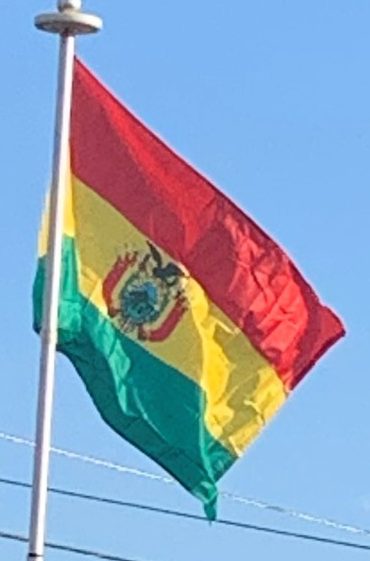Following the renewed independence of Peru, Peruvian president General Agustín Gamarra invaded Bolivia on november 18 1841, the battle de Ingavi took place, in which the Bolivian Army defeated the Peruvian troops of Gamarra. After the victory, Bolivia invades Perú, several fronts of struggle are opened in the Peruvian south. The eviction of the Bolivian troops in the south of Peru would be achieved by the greater availability of material and human resources of Peru, the Bolivian Army did not have enough troops to maintain the occupation. At the end of the war, the Treaty of Puno was signed on June 7, 1842. However, the climate of tension between Lima and La Paz would continue until 1847, when the signing of a Peace and Trade Treaty became effective.
A period of political and economic instability in the early-to-mid-19th century weakened Bolivia. In addition, during the War of the Pacific (1879–83), Chile occupied vast territories rich in natural resources south west of Bolivia, including the Bolivian coast. Chile took control of today’s Chuquicamata area, the adjoining rich salitre (saltpeter) fields, and the port of Antofagasta among other Bolivian territories.
Thus, since independence, Bolivia has lost over half of its territory to neighboring countries. Through diplomatic channels in 1909, it lost the basin of the Madre de Dios River and the territory of the Purus in the Amazon, yielding 250,000 km² to Peru. It also lost the state of Acre, in the Acre War, important because this region was known for its production of rubber. Peasants and the Bolivian army fought briefly but after a few victories, and facing the prospect of a total war against Brazil, it was forced to sign the Treaty of Petrópolis in 1903, in which Bolivia lost this rich territory. Popular myth has it that Bolivian president Mariano Melgarejo (1864–71) traded the land for what he called “a magnificent white horse” and Acre was subsequently flooded by Brazilians, which ultimately led to confrontation and fear of war with Brazil. In the late 19th century, an increase in the world price of silver brought Bolivia relative prosperity and political stability.
Early 20th Century:
During the early 20th century, tin replaced silver as the country’s most important source of wealth. A succession of governments controlled by the economic and social elite followed laissez-faire capitalist policies through the first 30 years of the 20th century.
Living conditions of the native people, who constitute most of the population, remained deplorable. With work opportunities limited to primitive conditions in the mines and in large estates having nearly feudal status, they had no access to education, economic opportunity, and political participation. Bolivia’s defeat by Paraguay in the Chaco War (1932–35), where Bolivia lost a great part of the Gran Chaco region in dispute, marked a turning-point.
The Revolutionary Nationalist Movement (MNR), the most historic political party, emerged as a broad-based party. Denied its victory in the 1951 presidential elections, the MNR led a successful revolution in 1952. Under President Víctor Paz Estenssoro, the MNR, having strong popular pressure, introduced universal suffrage into his political platform and carried out a sweeping land-reform promoting rural education and nationalization of the country’s largest tin mines.
Late 20th Century:
Twelve years of tumultuous rule left the MNR divided. In 1964, a military junta overthrew President Estenssoro at the outset of his third term. The 1969 death of President René Barrientos Ortuño, a former member of the junta who was elected president in 1966, led to a succession of weak governments. Alarmed by the rising Popular Assembly and the increase in the popularity of President Juan José Torres, the military, the MNR, and others installed Colonel (later General) Hugo Banzer Suárez as president in 1971. He returned to the presidency in 1997 through 2001.
